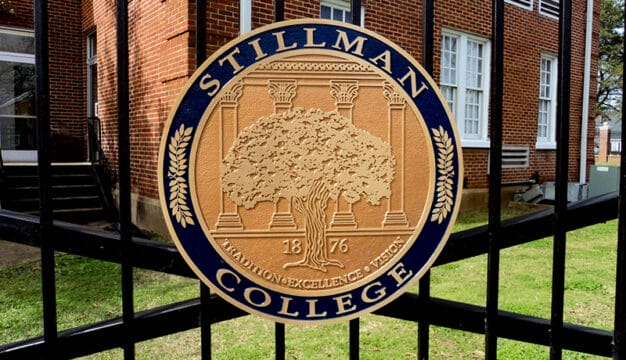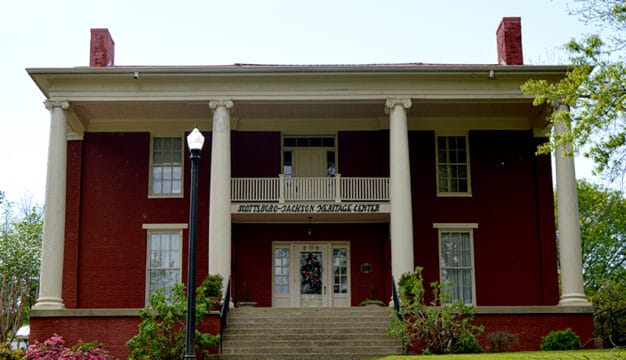Lyric Theatre
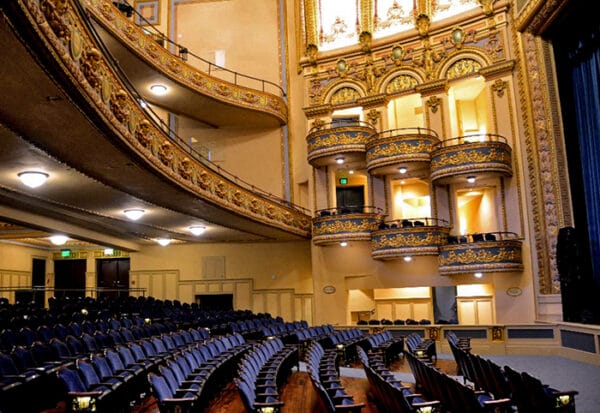 Lyric Theatre Interior
First opening in January 1914, the Lyric Theatre in Birmingham, Jefferson County, has had a long and tumultuous history as a performance and entertainment venue. Once one of the finest theaters in the city, it played host to several firsts for Alabama theater culture. It was the first to use artificial cooling, though not always successfully, by using fans to blow air over two tons of ice (stored under the stage) toward the audience. Additionally, the Lyric was one of the first theater venues at which African Americans and whites could attend the same show and pay the same admission price, although they sat in separate sections. The Lyric is located on Third Avenue North across the street from the Alabama Theatre in Birmingham’s Historic Downtown and Theatre District.
Lyric Theatre Interior
First opening in January 1914, the Lyric Theatre in Birmingham, Jefferson County, has had a long and tumultuous history as a performance and entertainment venue. Once one of the finest theaters in the city, it played host to several firsts for Alabama theater culture. It was the first to use artificial cooling, though not always successfully, by using fans to blow air over two tons of ice (stored under the stage) toward the audience. Additionally, the Lyric was one of the first theater venues at which African Americans and whites could attend the same show and pay the same admission price, although they sat in separate sections. The Lyric is located on Third Avenue North across the street from the Alabama Theatre in Birmingham’s Historic Downtown and Theatre District.
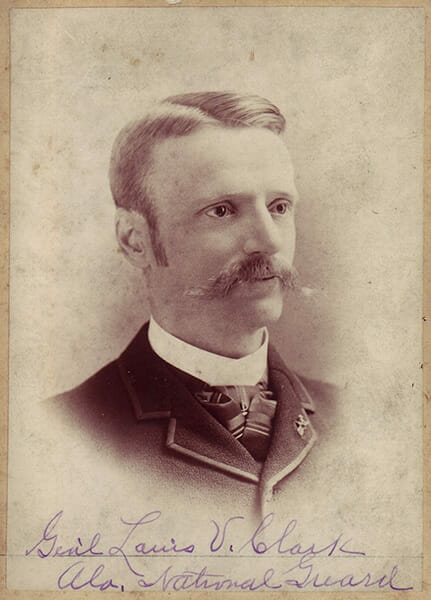 Louis V. Clark
The theatre was built as part of a six-story multipurpose commercial structure by Gen. Louis V. Clark, commander of the Alabama National Guard and a real estate developer who was born in Georgia but raised in Mobile, Mobile County. He leased the theatre to entrepreneur Jake Wells, who ran similar theatres in Georgia, Tennessee, and Virginia. Construction began in 1912, with plans to open that year, but various setbacks delayed the opening until January 1914. The theatre portion was built at the rear of the building, set back far enough to accommodate store fronts facing the street. It was considered the most lavish theater in the city for its ornate balconies and wall ornamentation and exterior white cornice, since removed.
Louis V. Clark
The theatre was built as part of a six-story multipurpose commercial structure by Gen. Louis V. Clark, commander of the Alabama National Guard and a real estate developer who was born in Georgia but raised in Mobile, Mobile County. He leased the theatre to entrepreneur Jake Wells, who ran similar theatres in Georgia, Tennessee, and Virginia. Construction began in 1912, with plans to open that year, but various setbacks delayed the opening until January 1914. The theatre portion was built at the rear of the building, set back far enough to accommodate store fronts facing the street. It was considered the most lavish theater in the city for its ornate balconies and wall ornamentation and exterior white cornice, since removed.
The venue had seating for 1,583 patrons, 12 exits to facilitate evacuation in case of fire, a large water tank under a removable panel in the center of the floor for water shows, and a light-dimming system that was considered one of the most advanced in the South. Two box offices were located underneath a large arch with decorative molding that still remain. The two marquees above the entrance are recreations of those one that graced the theatre at its 1914 opening. White patrons entered on Third Ave. and African American patrons entered around the corner on 18th Street North and proceeded to the upper balcony to an area restricted to them. The Lyric was the last theatre constructed for live performances in Birmingham. Indeed, the neighborhood drew comparisons with Broadway in New York City for the number of theaters. The opening of the Lyric, however, led to the demise of the Majestic next door, such was the competition in the city.
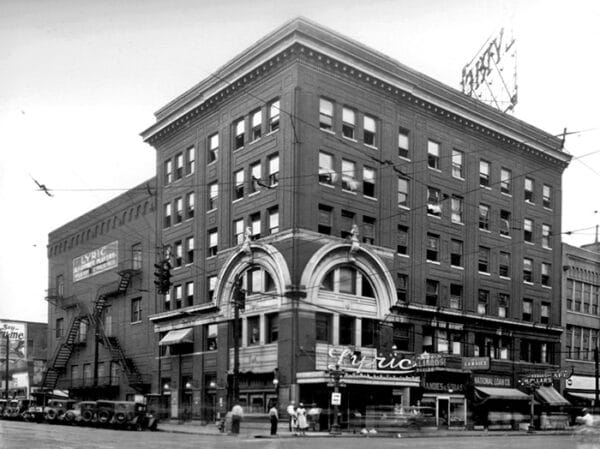 Lyric Theatre
The Lyric suffered an ominous start when theatre tycoon Karl Hoblitzelle, who may have had an interest in the Majestic, secured an injunction over a disagreement on its opening acts on January 12, 1914. That action prevented its opening for two days, an event that was reported in the national entertainment magazine Variety. The Lyric was a stop on the vaudeville circuit created by Benjamin Franklin Keith, who had used his time with P.T. Barnum’s circus to craft a unique brand of variety theater. In its early years, the Lyric hosted soon-to-be famous entertainers such as the Marx Brothers, Mae West, Sophie Tucker, Will Rogers, Jack Benny, and many others. Admission was considered low even for the time, $.25 to $.75, depending on the show, and the theatre was home to a repertory company, the Favorite Players. Despite early success, the theater struggled, and its economic situation worsened when the Ritz Theatre, with true air conditioning, opened in 1926.
Lyric Theatre
The Lyric suffered an ominous start when theatre tycoon Karl Hoblitzelle, who may have had an interest in the Majestic, secured an injunction over a disagreement on its opening acts on January 12, 1914. That action prevented its opening for two days, an event that was reported in the national entertainment magazine Variety. The Lyric was a stop on the vaudeville circuit created by Benjamin Franklin Keith, who had used his time with P.T. Barnum’s circus to craft a unique brand of variety theater. In its early years, the Lyric hosted soon-to-be famous entertainers such as the Marx Brothers, Mae West, Sophie Tucker, Will Rogers, Jack Benny, and many others. Admission was considered low even for the time, $.25 to $.75, depending on the show, and the theatre was home to a repertory company, the Favorite Players. Despite early success, the theater struggled, and its economic situation worsened when the Ritz Theatre, with true air conditioning, opened in 1926.
As the Great Depression deepened after 1929, audiences were less and less able to pay for live performances. Coupled with growing competition from radio and television, the Lyric and other theaters suffered additional setbacks as audiences shrank. The Lyric closed around 1931, and in 1933, brothers Ben L.A. Stein of Jacksonville, Florida, bought the theater and installed a Western Electric sound system and converted the interior from a live performance space into a movie theater. Ben returned to Jacksonville, and L.A. remained in Birmingham as the theater’s manager, eventually leasing the space to Paramount and the Wilby-Kincey circuit as a second-run theater.
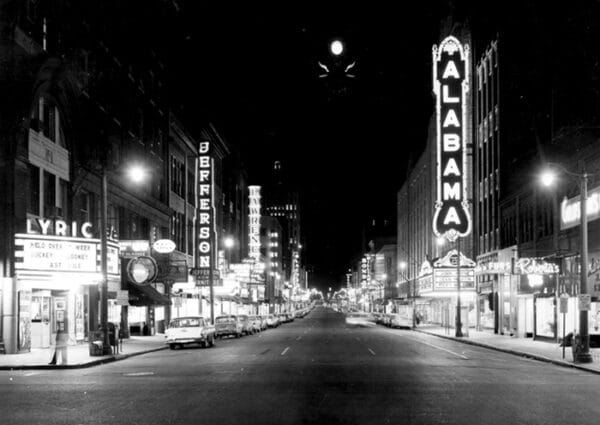 Birmingham’s Theater Row, 1959
The new endeavor was successful for several years. Its ownership changed hands quite a few times, however, particularly throughout the 1940s and 1950s. From the mid-1950s until its closing in 1958, the Lyric broadcast live shows over the radio on Saturday nights. By 1964, the Birmingham Women’s Committee of 100 was considering plans to renovate the theater and estimated that between $150,000 and $300,000 would be required to remodel the venue. Also that year, the Lyric Civic Theater Association was formed to likewise evaluate renovation plans and even brought to Birmingham architect and theater expert Clinton Bush of Nashville, Tennessee, to advise them. However, the costs proved prohibitive, renovation efforts stalled, and the theatre remained vacant.
Birmingham’s Theater Row, 1959
The new endeavor was successful for several years. Its ownership changed hands quite a few times, however, particularly throughout the 1940s and 1950s. From the mid-1950s until its closing in 1958, the Lyric broadcast live shows over the radio on Saturday nights. By 1964, the Birmingham Women’s Committee of 100 was considering plans to renovate the theater and estimated that between $150,000 and $300,000 would be required to remodel the venue. Also that year, the Lyric Civic Theater Association was formed to likewise evaluate renovation plans and even brought to Birmingham architect and theater expert Clinton Bush of Nashville, Tennessee, to advise them. However, the costs proved prohibitive, renovation efforts stalled, and the theatre remained vacant.
In 1972, the Lyric Theatre gained new life when local film aficionados Dee Sloan and Robert Wharton bought the venue. Sloan and Wharton had met at Jefferson State Junior College (now Jefferson State Community College), where they developed an interest in creating a space in which people could watch pre-1940s films. They renamed the theater the Grand Bijou Motion Picture Theater, and on April 19, 1973, it opened with a showing of The Jazz Singer (1927) starring Al Jolson. Their new incarnation of the Lyric was unsuccessful, however, and it was sold to Water Enterprises, which renamed it the Foxy Adult Cinema and showed adult films for the remainder of the decade. In the 1980s, the company permanently ceased its operation as a movie theater. Then in 1993, the theater was purchased by Birmingham Landmarks Inc., a nonprofit formed originally to buy and restore the Alabama Theatre across the street.
 Lyric Theatre Marquis
Birmingham Landmarks, under director Cecil Whitmire, a noted organist, undertook extensive research and campaigned to restore the Lyric Theatre to its former use as a live performance space. In March 2013, Birmingham Landmarks launched the “Light Up the Lyric” fundraising campaign to raise money for the renovation effort. The campaign was highly successful, raising approximately $7.4 million, and on January 14, 2016, the Lyric Theatre reopened as a live performance space. In honor of its past as vaudeville venue, the first performances were vaudeville-inspired acts by local performers. The theater currently hosts a variety of events, including live music, theatrical productions, and film screenings.
Lyric Theatre Marquis
Birmingham Landmarks, under director Cecil Whitmire, a noted organist, undertook extensive research and campaigned to restore the Lyric Theatre to its former use as a live performance space. In March 2013, Birmingham Landmarks launched the “Light Up the Lyric” fundraising campaign to raise money for the renovation effort. The campaign was highly successful, raising approximately $7.4 million, and on January 14, 2016, the Lyric Theatre reopened as a live performance space. In honor of its past as vaudeville venue, the first performances were vaudeville-inspired acts by local performers. The theater currently hosts a variety of events, including live music, theatrical productions, and film screenings.
The current incarnation of the Lyric Theatre is notable for maintaining the close seating and excellent acoustics that were necessary before the introduction of a sound system. Though it does not seat as many audience members as it once did, the theater has a capacity of 750 persons, with two levels of seating on the floor and mezzanine levels. The Lyric also contains 23 opera boxes as seating options, with 12 of those boxes located on the theater’s sides. The theatre is adorned with blue and gold decorative plasterwork and a proscenium mural and stage curtain depicting scenes from Greek mythology.
Additional Resources
Haarbauer, Donald Ward. “A Critical History of the Non-Academic Theatre in Birmingham, Alabama.” PhD dissertation. University of Wisconsin, Madison, Wisconsin, 1973.


